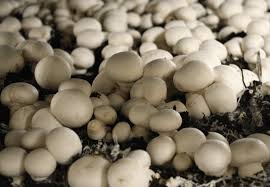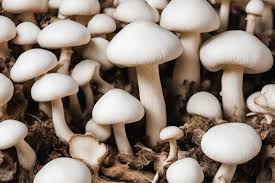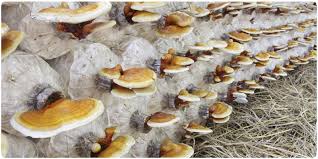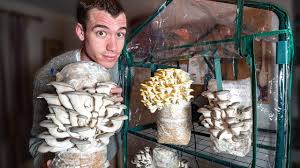Mushroom cultivation has gained popularity in recent years, not only for its economic potential but also for its nutritional benefits. This process involves growing fungi in a controlled environment to produce edible mushrooms, which are rich in vitamins, minerals, and proteins. Understanding the materials required for mushroom cultivation is crucial for success, whether you are a beginner or an experienced grower.
To start, the most important material is the substrate, which serves as the growth medium for the mushrooms. Common substrates include straw, sawdust, and agricultural waste products like corn stalks or sugarcane bagasse. These materials provide essential nutrients for the mushrooms to thrive. The substrate must be properly prepared, typically through a process of sterilization or pasteurization, to eliminate unwanted microorganisms that could compete with the mushroom spores.
Another essential component is the mushroom spawn, which contains the mycelium—the vegetative part of the fungus. Spawn can be purchased from specialized suppliers and comes in various forms, such as grain spawn, sawdust spawn, or plug spawn. Choosing the right type of spawn is critical, as it affects the yield and quality of the mushrooms.
Environmental control is also vital in mushroom cultivation. This includes materials for building a suitable growing environment, such as shelves or racks for the substrate bags, humidity control systems, and temperature-regulating equipment. Maintaining optimal conditions, such as temperature, humidity, and light, is essential for promoting healthy growth. For instance, most mushrooms prefer a temperature range of 55°F to 75°F (13°C to 24°C), along with high humidity levels, which can be achieved using humidifiers or misting systems.
In addition to these primary materials, growers should also consider tools for monitoring and maintaining environmental conditions. Thermometers, hygrometers, and pH meters are useful for keeping track of the temperature, humidity, and acidity of the substrate, ensuring that all factors are within the ideal range for mushroom growth.
Packaging materials for harvesting and storing mushrooms are equally important. Clean containers or bags should be available to prevent contamination and maintain the freshness of the harvested mushrooms. Proper packaging is essential to extend shelf life and ensure that the mushrooms reach consumers in optimal condition.
Lastly, it’s important to include protective gear when cultivating mushrooms, especially during the substrate preparation and harvesting processes. Gloves, masks, and aprons help prevent contamination and ensure personal safety while handling materials and tools.
Types of Mushrooms and Their Specific Material Needs

1. Button Mushrooms (Agaricus bisporus): Require a compost-based substrate rich in nitrogen. They thrive in temperatures between 65°F and 75°F (18°C to 24°C) with high humidity.
2. Oyster Mushrooms (Pleurotus ostreatus): Prefer straw, sawdust, or other lignocellulosic materials. They grow best at temperatures around 60°F to 75°F (15°C to 24°C) and require moderate humidity levels.
3. Shiitake Mushrooms (Lentinula edodes): Typically grown on hardwood logs or sawdust. They prefer cooler temperatures, around 50°F to 70°F (10°C to 21°C), with high humidity during fruiting.
4. Lion’s Mane Mushrooms (Hericium erinaceus): Thrive on hardwood sawdust or supplemented sawdust. They do well in temperatures of 60°F to 75°F (15°C to 24°C) with high humidity.
5. Reishi Mushrooms (Ganoderma lucidum): Grown on hardwood substrates or sawdust. They prefer temperatures of 70°F to 85°F (21°C to 29°C) and high humidity.
Substrates for Mushroom Cultivation
1. Straw: A common substrate for oyster mushrooms; it should be chopped and pasteurized to eliminate contaminants.
2. Hardwood Sawdust: Used for shiitake and lion’s mane mushrooms; it provides a rich nutrient source and can be supplemented with other materials.
3. Compost: Ideal for button mushrooms; it contains a mix of organic materials, providing necessary nutrients.
4. Coffee Grounds: An excellent substrate for various mushroom species, especially oyster mushrooms, due to its nutrient richness.
5. Coir and Vermiculite: Often used in combination for growing mushrooms like shiitake, providing good aeration and moisture retention.
Read Also: The Major Causes of Cannibalism among Poultry Birds
Nutrients and Supplements for Mushroom Growth

1. Nitrogen Sources: Ingredients like soybean meal or alfalfa meal can be added to substrates to enhance nitrogen content, promoting growth.
2. Mineral Supplements: Calcium, magnesium, and trace minerals can be added to support healthy mushroom development.
3. Carbohydrate Sources: Adding materials like cornmeal or sugar can provide extra energy, especially during the fruiting phase.
4. Vitamins: Supplementing substrates with B vitamins can enhance mushroom quality and yield.
5. Supplemented Sawdust: Combining sawdust with additional nutrients like bran can improve yields for species like shiitake.
Containers and Growing Systems
1. Plastic Bags: Commonly used for small-scale mushroom cultivation, especially for species like oyster and shiitake. They help maintain humidity and reduce contamination.
2. Buckets or Containers: Suitable for growing various mushrooms, allowing for easy handling and monitoring of conditions.
3. Shelving Systems: Provide a space-efficient way to stack containers or bags for vertical growing, maximizing available space.
4. Greenhouses: For larger scale operations, greenhouses offer a controlled environment for optimal growth conditions.
5. Hydroponic Systems: Innovative systems can be used for mushroom cultivation, integrating water and nutrient management for efficient growth.
Tools and Equipment for Preparation
1. Substrate Preparation Equipment: Tools like shredders or choppers for breaking down materials like straw or sawdust, ensuring uniformity in substrate preparation.
2. Mixing Tools: Large mixing containers or industrial mixers to thoroughly blend substrates with nutrients and supplements before sterilization.
3. Scale: A digital scale for accurately weighing substrate ingredients and supplements to ensure proper formulation.
4. Measuring Equipment: Cups and measuring spoons for precise measurement of liquids and powdered supplements during substrate preparation.
5. Containers for Inoculation: Sterile containers or bags for holding the prepared substrate during the inoculation process.
Sterilization Equipment and Techniques
1. Pressure Cooker or Autoclave: Used for sterilizing substrates by applying heat and pressure to kill contaminants and pathogens effectively.
2. Steam Sterilization Unit: A more extensive system for larger batches, employing steam to sterilize substrate materials in bulk.
3. Chemical Sterilization: Techniques using solutions like hydrogen peroxide or bleach for smaller quantities of substrate that can be soaked or sprayed.
4. Hot Water Bath: A method for pasteurizing substrates by immersing them in hot water for a specified duration to eliminate harmful microorganisms.
5. Filtration Systems: Used to sterilize air or water in mushroom growing environments, reducing contamination risks.
Read Also: 15 MANAGEMENT TIPS FOR BETTER POULTRY PERFORMANCE
Environmental Control Materials

1. Thermostats: Essential for monitoring and controlling temperature within the mushroom growing environment to ensure optimal growth conditions.
2. Hygrometers: Instruments for measuring humidity levels, critical for maintaining the right moisture content in the growing area.
3. Fans and Ventilation Systems: Used to promote airflow, ensuring adequate oxygen supply and preventing excess humidity buildup.
4. Heating Mats or Systems: These help maintain a stable temperature in the growing area, especially during cooler seasons.
5. Humidity Control Devices: Tools such as humidifiers or misting systems to maintain appropriate moisture levels for mushroom cultivation.
Harvesting Tools and Equipment
1. Sharp Knives or Scissors: Essential for cutting mushrooms at the base without damaging the mycelium, promoting further growth.
2. Harvesting Baskets: Used to collect harvested mushrooms while allowing for air circulation to prevent bruising and spoilage.
3. Gloves: Protective gloves to maintain hygiene and protect hands while handling mushrooms during the harvest.
4. Containers for Storage: Clean, breathable containers for storing harvested mushrooms, helping maintain freshness.
5. Scale for Weighing: A scale for weighing harvested mushrooms to track yields and for sale preparation.
Do you have any questions, suggestions, or contributions? If so, please feel free to use the comment box below to share your thoughts. We also encourage you to kindly share this information with others who might benefit from it. Since we can’t reach everyone at once, we truly appreciate your help in spreading the word. Thank you so much for your support and for sharing!






